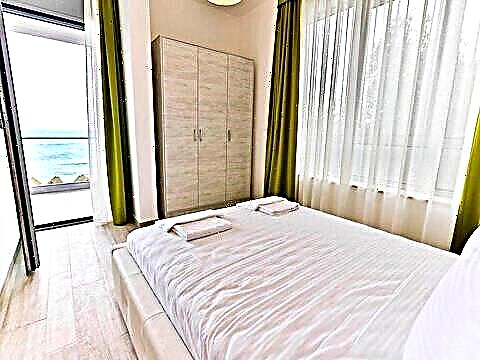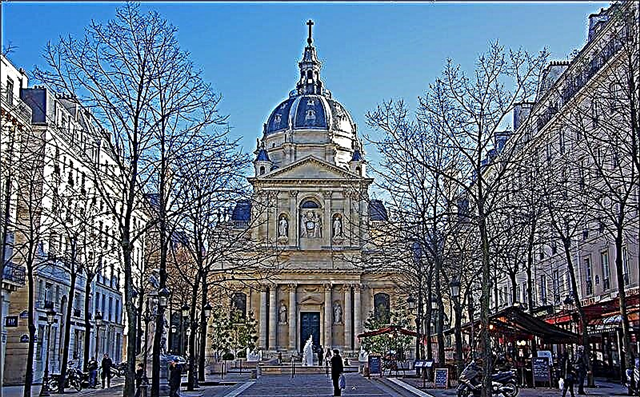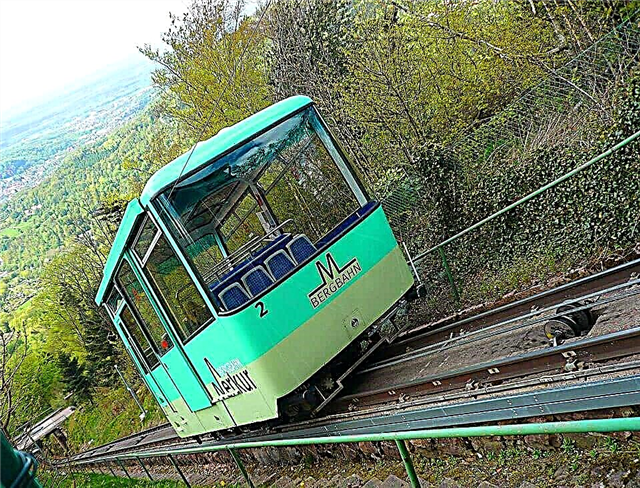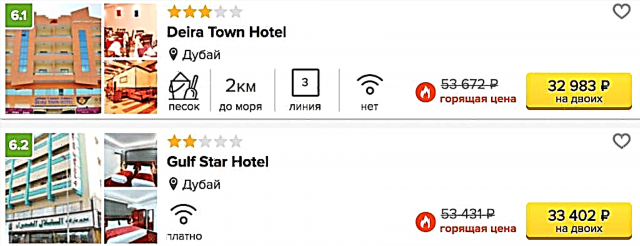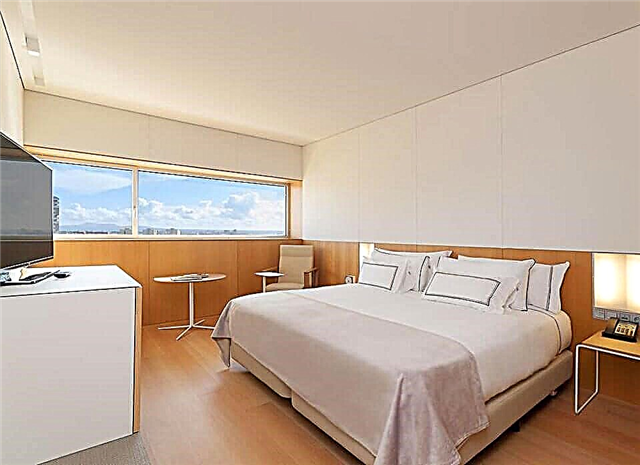The temple of remarkable beauty is a real decoration of ancient Kostroma and the only posad church that has survived here since the middle of the 17th century. The elegant and expressive decor sets it apart from other architectural monuments. Twelve domes, intricate figured shapes, bright tiles and checkered coloring look especially picturesque from the side of the Volga embankment and attract many pilgrims and tourists to the temple.
History of the construction of the church
The place where the temple now stands was in the old days called Debrey - dense thickets by the river. In Kostroma, two Wilds have long been distinguished - Lower and Upper. According to the legend, the piedmont Lower Debrya became the site of construction of the first temple in the 13th century. This church was erected by the river by Prince Vasily, nicknamed Kvashnya, the former "little finger" (younger) son of the Grand Duke Yaroslav Vsevolodovich. It is believed that Debrya was a favorite hunting place for the Kostroma prince.

General view of the Church of the Resurrection on Debre
The city grew, and already from the 15th century, these suburbs became one of its townships, which were inhabited mainly by artisan tanners. Their craft was in demand, and the posad did not live in poverty. According to the documents of 1628, the cold Resurrection Church located here had a hipped roof and a chapel of St. Catherine. And next to it was the warm church of Kozma and Damian.
There is a legend that the five-domed brick temple was built with English money. It happened like this. A rich merchant, Kirill Grigorievich Isakov, actively traded in leather goods in the settlement. Barrels of paint for leather were brought to him from England. And once in one of these barrels the merchant saw not paint, but gold coins. The God-fearing merchant did not embezzle the gold, but invested in the building of the stone church.

It is believed that the brick temple appeared in the settlement no later than 1652. Two of its chapels were dedicated to the heavenly patrons of the mother and father of the ktitor Kirill Isakov - Catherine and Grigory. The southern side-altar was consecrated in memory of the Great Martyr Catherine, and the northern one - in honor of three Christian saints at once, one of whom was Archbishop Gregory the Theologian of Constantinople. However, the donor did not wait for the consecration. Death came to him earlier, and the parishioners buried the merchant in the basement of the newly built church.
Church history in the 17th-20th centuries
Initially, a bell tower was built at the church. But when the nearby warm Znamensky temple, part of the architectural ensemble of the Resurrection Church, was rebuilt, this old bell tower was dismantled. And a new one was built on its foundation. We can see how the temple looked at the beginning of the 20th century in old photographs of the famous Russian photographer Sergei Mikhailovich Prokudin-Gorsky, taken in 1910.

In 1913, when all of Russia solemnly celebrated the 300th anniversary of the Romanov dynasty, the Tsar and his family visited Kostroma. They say that he and his children climbed the bell tower of the Znamensky Church and admired the picturesque Volga panorama from above.
With the advent of Soviet power, the church continued to receive parishioners. It was closed only in the 1930s, during an active anti-religious campaign. And the church building began to be used as a granary.
In the mid-1940s, church services were again allowed here. However, by that time, the bell tower had already been destroyed, and the temple premises were in a very dilapidated state without repair: there were no floors, many windows were knocked out, and some of the images disappeared from the iconostasis. Therefore, the parishioners had to work hard to restore them.

The fact that the temple is slowly being revived was not to the liking of the authorities, and they tried to close it several times. But the parishioners managed not only to defend the building, but also achieved the recognition of the temple as a cathedral, because the Assumption Cathedral in the city center had already been destroyed by that time. In the Resurrection Church, the main shrine of the Kostroma people was kept for a long time - the image of the Mother of God Fedorovskaya saved from the Assumption Cathedral. In the early 1990s, this icon was transferred to Epiphany-Anastasin monastery... And two years later, the Znamensky Women's Monastery was created at the church.
Architecture and interior decoration
The stone church was built on a high foundation and originally had a podzakomarny covering. Its five large heads are propped up by powerful drums.

View of the Church of the Resurrection on Debra from Osypnaya Street
The building is surrounded by an arched gallery. In the beginning, these arched openings were built open, and they gave the entire temple structure even more lightness. But now the one-story gallery is bricked up. You can get on it through the porches, two of which have a wide hipped roof. Faceted tents add extra elegance and compositional complexity to the temple. According to the best traditions of Russian ornamentation, they are decorated with double rows of graceful kokoshniks.
The porch, located on the west side, is no less interesting. At the very beginning, it went to the Holy Gates, built at the same time as the temple. Later, the porch and the gate were connected to each other by a covered passage.
The Holy Gates can be regarded as a separate remarkable monument of ancient Russian art. They are very unusual, have arched openings, end with three miniature faceted tents with domes and are richly decorated with stone carvings and multicolored tiles. At the gate, visitors to the temple are greeted by white stone figures - a unicorn, a lion, an owl, a siren and an eagle. All of them are well-known in Christianity symbols associated with the holiday of Sunday.

Outwardly, the church is very reminiscent of the Trinity Cathedral, standing in Ipatiev monastery, however, differs from it in a richer and more elegant decor. The church facades are separated by light paired semi-columns, and the window frames are framed by picturesque kokoshniks. In addition, the temple is richly decorated with polychrome tiles and stone carvings depicting mythological animals and plants.
The altar apses of the temple are very beautiful. They are decorated with painting "diamond rustic", when the decor imitates the volume of faceted checkers. This is how churches built in the 17th century Trinity-Sergius Lavra and in Rostov Kremlin.
It is known that soon after the completion of construction, the church was painted from the inside with frescoes. This was done by an artel of isographers under the guidance of the famous Kostroma master of icon painting Vasily Ilyich Zapokrovsky. Then, during the repairs of the temple, the old murals were repeatedly painted over. And the original frescoes were uncovered only in the 1960s. Of course, it was already impossible to restore all of them, but some of the old paintings are still visible.

Domes of the Church of the Resurrection on Debra
The frescoes in the north aisle are best preserved. They were made 18 years after construction under the guidance of another famous Kostroma master-iconographer - Guriy Nikitich Kineshemtsev. The lives of the saints and the martyrdom of the apostles became the subject of these murals. In addition to frescoes, a five-tiered iconostasis has been preserved in the Trekhsvyatsky chapel - a real monument of ancient Russian applied art. It has very fine carvings, covered with paint and gilding, and ancient icons.
And in the main part of the temple there is an iconostasis made at a later time - in 1852. However, it contains images that have remained from the more ancient iconostasis.
The Resurrection Church is active, and church services are regularly held here. The Znamenskaya women's monastery, organized under her, unites 9 nuns and the abbess. This monastery has a small medical center and an almshouse.

Restoration work has been carried out in the neighboring Znamensky Church, and a high five-tiered bell tower has already been completely rebuilt. And the Resurrection Church was surrounded by a new figured fence, which separated it from the Church of the Sign.
Inside the Resurrection Church itself, restoration work is constantly being carried out. In addition, art critics continue to study this architectural monument. Several icons of the 17th century, as well as an ark with particles of the relics of Christian saints, are considered especially revered shrines of the Resurrection Church.
How to get there
The church is located on the street. Cooperatives (Lower Debre), 37.
By car. The road from the capital to Kostroma takes 4.5-5 hours (346 km) and runs along the Yaroslavl highway and the M8 highway (Kholmogory). In Kostroma on the road bridge you need to move to the left bank of the Volga, and immediately turn right - on the street. Lower Wild. The temple stands 350 m from the bridge.

Holy gates
The current state of the temple and the visiting regime
By train or bus. From the Yaroslavsky railway station to Moscow trains reach Kostroma in 6.04-6.35 hours. In addition, from the Central Bus Station of the capital, located near the Shchelkovskaya metro station, you can get to Kostroma by regular buses (7 trips a day). This journey takes 6.50 hours. The Kostroma bus station is 1 km away from the railway station. You can drive up to the temple in the city by buses No. 20, 21, 25, 26 and trolleybuses No. 1, 4 (stop "Ul. Podlipaeva"), as well as by buses No. 1, 2, 9, 14 and trolleybuses No. 2, 3, 7 (stop "Department store Kostroma").
Attraction rating:

